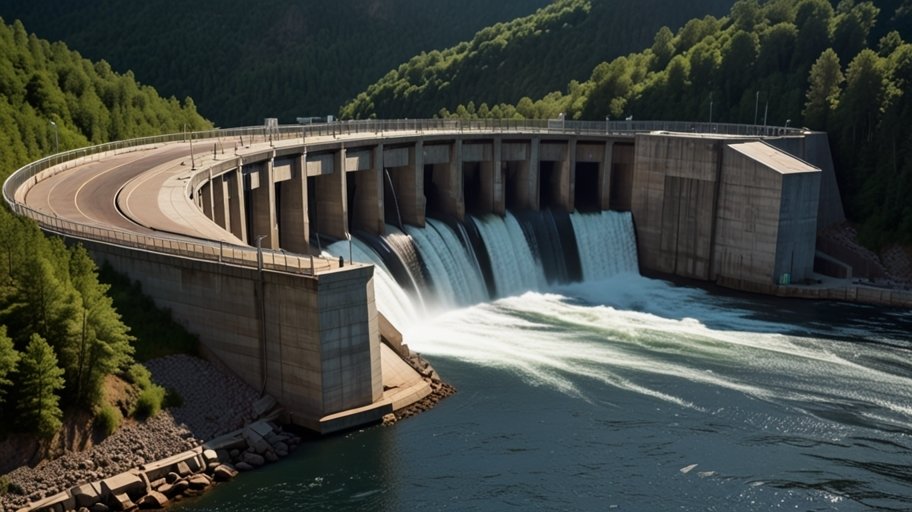Guatemala and the Crisis of Energy
Guatemala is a Central American nation known for its rich cultures and diversified landscapes, experiencing an acute energy crisis. Despite holding substantial natural resources, it has been unable to meet these increasing demands for energy. Its impacts stretch out to economic, social, as well as environmental considerations. But the government of Guatemala, together with international and local stakeholders, is taking a range of initiatives to deal with this crisis. This report looks into the roots of Guatemala’s energy problems, the methods currently being used to solve the problem, and the future of energy in Guatemala.

Understanding Guatemala’s Energy Crisis
Overall, the energy crisis that Guatemala is experiencing is as much a factor of inadequate infrastructure, dependence on imported energy, inefficient energy distribution and rapid population growth as it is. It can also be said that the aforementioned challenges are fueled by the economic dependence of the country on energy-intensifying sectors such as agriculture and manufacturing, together with the growing urbanization.
Energy Demand vs. Supply
Over the past decades, Guatemala’s population has grown significantly, which increased power demand as well as other forms of energy. More and more people have moved to cities, increasing the demand for reliable and affordable energy even further. Industrial growth has also boosted the amount of energy needed for mining, agriculture, and manufacturing.
Unfortunately, the energy supply in the country falls short of demand. Although it has considerable potential for renewable energy generation, particularly hydroelectric, geothermal, and solar energy, most remains unutilised due to economic and other political constraints. The imbalance between demand and supply has resulted in the frequent occurrence of power outages, high costs for electricity, and unreliable energy access, especially in the rural areas.
Energy Importation
Another factor contributing so significantly to the energy crisis has been that Guatemala depends primarily on imported energy, especially fossil fuels. Therefore, a significant proportion of the oil and natural gas needed for electricity is imported. This dependence on imports has therefore left it relatively susceptible to global swings in energy prices, which drives costs for consumers and businesses in the long term up.
Not least, energy supply from fossil fuel sources affects the environment directly, with ultimate outcome being air pollution and greenhouse gas emissions. Guatemala is possibly one of the most vulnerable countries to climate change around the world, meaning that utilization of fossil fuels would most certainly intensify environmental and economic challenges created by global warming.
Wear and Tear in Infrastructure
Most of Guatemala’s energy infrastructure is outdated and inefficient. It is highly susceptible to losses and outages, making it difficult to be able to deliver power across the entire country effectively. In rural areas, where half the population lives, electricity access is hard to come by, and many communities rely on expensive and polluting forms of energy, including diesel generators or firewood.
This translates to huge investment towards modernization and expansion of energy infrastructure in the country and such projects have received little funding under political instability and economic straitjacketing.
Policies and Programs on Energy by the Government
The Guatemalan government has issued policies and initiatives focused on ensuring energy security and sustainability with deep concern at the crisis. The steps taken include expansion of renewable energy capacity, modernization of infrastructure and promoting energy efficiency.
The government in Guatemala has devised a long-term national energy plan that should make the country overcome several major energy-related challenges. A meticulous analysis of the strategy suggests diversifying and strengthening energy resources with increased electricity coverage for mainly rural areas, which rely somewhat on fossil fuels.
One of the primary focuses of the program is to increase the share of renewable power in Guatemala’s energy mix. The government targets at least 80% of electricity generation in the country to come from renewable sources by 2030, and it is encouraging investments in hydroelectric, geothermal, solar, and wind energy projects.
Hydroelectric Power Development
Hydroelectric power-generating capability is also high in Guatemala because of its mountainous character and considerable river resources. Hydroelectric power has already surpassed more than half the sources of electricity in this country.
The government is trying to increase the capacity of existing hydroelectric power plants and build new ones, also facing that expected increase in demand. However, big hydroelectric schemes have been threatened by local communities and environmental groups, since these schemes can destroy ecosystems and uproot original traditional populations. Thus, renewable energy development must always be under balance between the ability to deliver it and rights and needs of affected communities.
Geothermal Energy Development
Besides hydropower, Guatemala also promises geothermal energy since the country lies along the geologically active region known as the Pacific Ring of Fire. Geothermal is one of the good bases in reliable and renewable electricity generation without the variability of solar or wind energy.
The government of Guatemala, with the help of organizations around the world, has been investing in the exploration and development of geothermal resources. Several geothermal plants are already operating while many others are at various stages of development. Geothermal capacity additions are part of the diversification in energy strategy in Guatemala.

Solar and Wind Energy
Solar and wind energy form some of the most important pillars in the renewable energy policy of Guatemala. The available sunlight in the northern and eastern parts of the country, therefore favorable for the generation of solar power, is very rich. In recent years, a number of large-scale solar projects have come on-stream, and the government provides incentives to attract further investment in the sector.
Wind energy is relatively unexploited in Guatemala but the government is considering setting aside areas which have satisfactory wind conditions for the erection of wind farms. Although solar and wind energy are, at this point in time, a relatively minor portion of total generation of electricity in the country, they are likely to increase as technology costs decline and new projects enter the system.
Rural Electrification Programs
For example, access to electricity remains a giant challenge in the power sector in Guatemala. Several programs of rural electrification initiated by the government are targeted at expanding the electricity grid to other, very remote parts of the country. These tend to focus on the use of renewable energy sources, such as solar, to bring off-grid solutions to remote communities where the national grid cannot reach.
But it can be just as valuable in enhancing rural life and creating economies. Access to electricity could facilitate education and health facilities, and small enterprise development, contributing towards reducing poverty and inequalities in rural areas.
Energy Efficiency and Conservation
In addition, the Guatemalan government is promoting energy efficiency and conservation to reduce demand and decrease costs. Energy efficiency programs aim to improve building, appliance, and industrial processes efficacies and encourage consumers to grow more energy-conscious.
Optimization of the transmission and distribution networks of electricity in an efficient manner is another area where governments are focusing. This would improve the loss reduction of the electricity transmission process and enhance the reliability of the grid. Organizations and development banks from different countries across the world extend the support with technical assistance and financing by offering energy efficiency projects.
Challenges and Obstacles
Although Guatemala has been making great strides in rectifying its energy crisis, great challenges lie ahead. These include political instability, limited financing, and social and environmental concerns.
Political Instability and Governance Issues
Political instability has been the hallmark of Guatemala’s power-changing exercise with allegations of corruption on the side. This instability has hampered the formulation of long-term energy policies and discouraged investment in the energy sector. Effective governance and regulatory framework have a lot to do with attracting private investment and guaranteeing the success of implemented energy projects.
Access to Financing
Most of the large-scale energy projects, particularly those concerning renewable energy sources, require substantial initial investment. Despite the involvement of international organizations and development banks, the financing gap remains at an enormous level. Public-private partnerships are dominant in most of the renewable energy projects in Guatemala; however, the private sector has been very reluctant due to risks from political policy uncertainty.
Social and Environmental Issues
Hydroelectric dams and geothermal plants have become the focal point of contention by numerous indigenous communities and environmental groups. Most of these projects have direct social and environmental effects on a community, including forced displacement of local people, alteration of the quality of water or resources in the system, and even interference with ecosystems. The government has to involve the affected parties, ensuring that their rights are respected during the development processes.
International Organizations and Partnerships End
International organizations and development banks have contributed to efforts made by Guatemala in rescuing itself from its energy crisis. They assisted the country through technical aid and financing in renewable energy projects, rural electrification, and energy efficiency programs through the World Bank, the IDB, and the UNDP.
Beside the financial assistance, international organizations have helped in the development of regulatory frameworks and policies that may attract private investment into the energy sector. Such partnerships have been crucial in helping overcome some of the challenges associated with political instability and governance issues.
Other foreign governments, more especially those in Europe and North America, are also coming in to assist Guatemala in its energy transition process. USAID has been of assistance with funding on rural electrification projects, and energy efficiency initiatives; European countries have been investing in renewable energy development.
Prospects for Future Opportunities
In contrast, there are immense opportunities for the improvement of the country’s energy situation in the next years. Indeed, Guatemala is endowed with a rich abundance of renewable energy sources coupled with increasing international interest in sustainable development, particularly destined to face a transition towards a cleaner and more reliable energy system.
Expansion of Renewable Energies
Further investment in hydroelectric, geothermal, solar, and wind power will make Guatemala a renewable-source leader within the region. The country will improve energy security, cut costs, and reduce its negative impacts on the environment, as it becomes less reliant on imported fossil fuels and increases the share of renewables in the energy mix.
Regional Energy Integration
Guatemala is part of the Central American Electrical Interconnection System, an electrical energy integration system, connecting grids from several Central American countries. Regional energy integration provides scope for Guatemala to export residual renewable energy to its neighbors, thereby enhancing the regional grid’s stability and reliability.
Private Sector Cooperation
Increased private sector involvement in the energy sector will provide a boost to renewable sources as well as energy efficiency. Public-private collaboration, supported by full-fledged regulatory frameworks and incentives through the government, are prerequisites for future investment and sustainable security of Guatemala’s energy.

Conclusion
The energy crisis in Guatemala is not a simple issue, mainly involving interlocking economic, political, and environmental variables. However, the country still has untapped potential in addressing such dilemmas through renewable energy, infrastructure modernization, and energy efficiency. With the aid of international organizations and private investment, Guatemala can shift toward a sustainable and secure energy system to meet the needs of its growing population and support its economic development. Not easy, but with this sustained effort and investment, Guatemala is at a real opportunity to emerge stronger and more resilient from its energy crisis.



